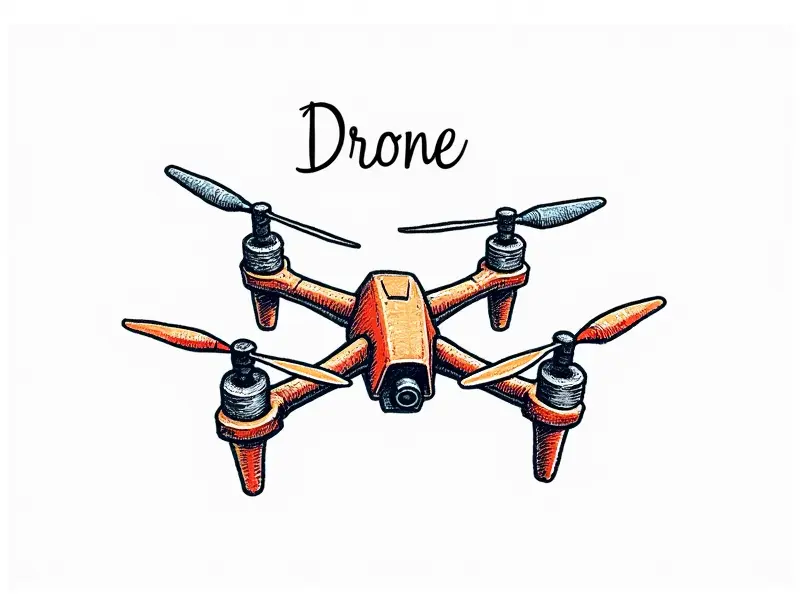Quadcopter frame size?

Why Frame Size Matters in Quadcopters
The frame size of a quadcopter is one of the most critical factors to consider when building or purchasing a drone. It directly influences several aspects such as maneuverability, stability, payload capacity, and overall performance. A well-chosen frame size can make your quadcopter more efficient in various applications like aerial photography, FPV racing, or industrial inspections.
Choosing the Right Quadcopter Frame Size
Selecting the appropriate frame size for your quadcopter depends on several factors including intended use, flight characteristics desired, and payload requirements. Smaller frames are ideal for indoor flying and tight spaces, while larger frames offer better stability and payload capacity for outdoor applications.
Optimal Quadcopter Frame Size for FPV Racing
For FPV (First Person View) racing, the optimal frame size is crucial to achieving high speeds and agile maneuverability. Typically, smaller frames like 250mm or 300mm are preferred due to their lightweight construction and ability to perform sharp turns at high velocities.
Small vs Large Quadcopter Frames: Which is Better?
The choice between small and large quadcopter frames depends on your specific needs. Small frames (<250mm) excel in indoor flying, FPV racing, and tight spaces where maneuverability is key. On the other hand, larger frames (450mm+) are better suited for outdoor applications requiring stability, payload capacity, and long-range flights.
How to Pick the Perfect Quadcopter Frame Size
To select the perfect frame size, consider your intended use case:
- Aerial Photography: Opt for a medium-sized frame (350mm-450mm) that balances stability and maneuverability.
- FPV Racing: Choose smaller frames (<250mm) for better agility and speed.
- Industrial Applications: Larger frames (>450mm) are ideal for carrying heavy payloads and operating in open spaces.
Impact of Quadcopter Frame Size on Performance
The frame size significantly impacts the performance metrics of a quadcopter. Smaller frames tend to be more agile but have limited payload capacity, while larger frames offer stability and can carry heavier loads at the expense of maneuverability.
Best Quadcopter Frame Sizes Explained
Here are some common frame sizes and their typical applications:
- 150mm-250mm Frames: Ideal for FPV racing, indoor flying, and tight spaces.
- 300mm-450mm Frames: Suitable for aerial photography, videography, and general outdoor use.
- 450mm+ Frames: Best for industrial applications requiring stability and payload capacity.
Choosing a Quadcopter Frame Size for FPV Racing
For FPV racing, the frame size should prioritize agility over everything else. A 250mm or 300mm frame is typically recommended as it provides the necessary speed and maneuverability to excel in competitive races.
Understanding Quadcopter Frame Size Impact on Performance
The impact of frame size on performance includes:
- Maneuverability: Smaller frames offer better agility for sharp turns and quick movements.
- Stability: Larger frames provide more stability in windy conditions and at high altitudes.
- Payload Capacity: Larger frames can carry heavier payloads, such as cameras or additional batteries.
Benefits of Mini Quadcopter Frames
The benefits of mini quadcopter frames include:
- Portability: Easily transportable and convenient for indoor flying.
- Cost-Effective: Generally less expensive than larger frames, making them accessible to beginners.
- Agility: Excellent maneuverability in tight spaces and during FPV racing.
Top 5 Compact Quadcopter Frames Today
Here are some of the best compact quadcopter frames currently available:
- Flyduino X220 Frame: A popular choice for FPV racing due to its lightweight and agile design.
- Runcam RacerX 250mm Frame: Known for its durability and aerodynamic shape, ideal for high-speed flights.
- Holybro Pixhawk 320mm Frame: Offers a balance between agility and stability, suitable for both FPV racing and aerial photography.
- TBS Discovery 250mm Frame: Designed with ease of assembly and durability in mind, perfect for beginners.
- RacingRTR RacerX 300mm Frame: Provides a larger platform compared to the standard 250mm frame while maintaining agility.
Conclusion
Selecting the right quadcopter frame size is crucial for achieving optimal performance in your chosen application. Whether you're into FPV racing, aerial photography, or industrial use, understanding how frame size impacts maneuverability, stability, and payload capacity will help you make an informed decision.

